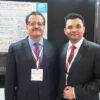![1]()
News
Cardiac arrhythmia heightens mortality risk during epilepsy hospitalizations
December 11, 2019
BALTIMORE – A secondary diagnosis of apnea is not independently associated with increased odds of death, however.
![1]()
News
Genetic test stratified AFib patients with low CHA2DS2-VASc scores
December 9, 2019
A 32-locus genetic test classified AFib patients with low CHA2DS2-VASc scores into high– and low–stroke-risk subgroups.
![1]()
News
New heart failure trial data presage guideline revisions
December 9, 2019
PHILADELPHIA – Recent trial findings for sacubitril/valsartan and dapagliflozin in heart failure patients provide a blueprint for guideline changes.
![1]()
News
Aspirin plus a DOAC may do more harm than good in some
December 8, 2019
Adding aspirin to DOAC therapy for the secondary prevention of VTE or the prevention of stroke associated with NVAF without a clear indication increased bleeding risks in a large cohort.
![1]()
News
DAPA-HF: Dapagliflozin benefits regardless of age, HF severity
November 25, 2019
PHILADELPHIA – The SGLT2 inhibitor had similar efficacy in the elderly, and across the spectrum of baseline symptom status.
![1]()
News
Large population-based study underscores link between gout, CVD event risk
November 23, 2019
ATLANTA – The relationships between gout and fatal and nonfatal CVD events found in a large population-based health data linkage study in New Zealand were not ameliorated by allopurinol use or serum urate lowering to treatment target.
News
Hyperkalemia-related treatment changes linked to death in acute HF
November 21, 2019
It’s not the potassium, but the subsequent dosage reduction, that may boost mortality after hospitalization for acute heart failure.
![1]()
News
Risk stratification of syncope patients can help determine duration of telemetry monitoring
November 12, 2019
In ED patients with syncope, what is the optimal duration of telemetry monitoring to detect underlying arrhythmia?
![1]()
News
Better time data from in-hospital resuscitations
November 11, 2019
Acquiring accurate time-interval data is “the key to future high-quality research.”
![1]()
News
Aspirin for primary prevention reduces risk of CV events, increases bleeding
November 8, 2019
What is the association between aspirin for primary prevention and cardiovascular events and bleeding?







